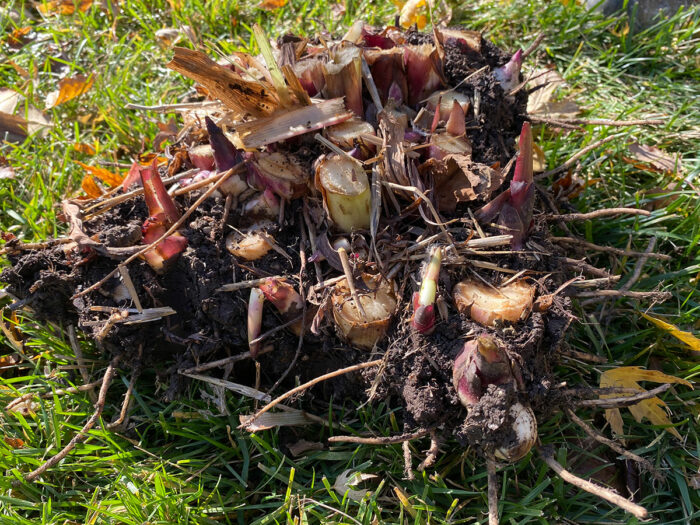
Winter weather can be challenging for gardeners in the Northern Plains. However, we are still able to use cold-sensitive plants in our gardens if we take the necessary steps to protect them. Here are my techniques to ensuring my tender shrubs and perennials live to see another year.
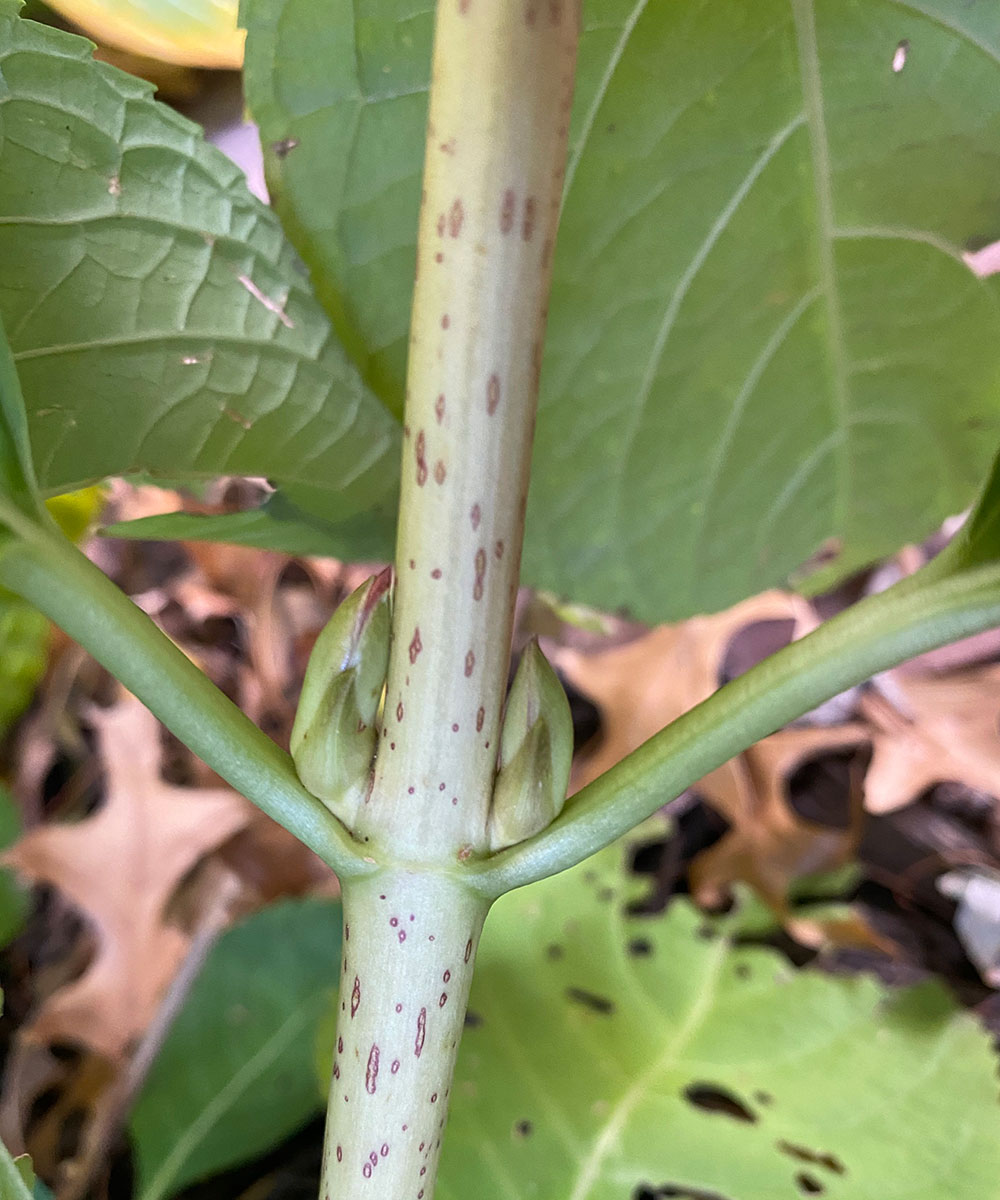
Shrubs
Having become obsessed with bigleaf hydrangeas (Hydrangea macrophylla and cvs., Zones 5–11) recently, I’ve determined that I cannot give up on the few prima donnas that I already have in my garden. Endless Summer® hydrangea (H. macrophylla ‘Bailmer’, Zones 4–9), Let’s Dance® Moonlight hydrangea (H. macrophylla ‘Robert’, Zones 5–9), and ‘Lady in Red’ hydrangea (H. macrophylla ‘Lady in Red’, Zones 6–9) are three that put on lush new growth every year but die back to the ground over the winter. The cold winter weather will cause them to lose their spring and summer flowers unless I plan ahead. The trick to saving the blooms is protecting the buds from a winter of freezing. Place a cage around the plant after a hard frost, and fill it with an 18-inch layer of light organic material. Straw, pine needles, and oak leaves work well for this purpose. If your soil pH needs adjusting, this is also a suitable time to apply the appropriate amendments. When all danger of frost has passed in the spring, remove the organic material, prune away any dead wood, and fertilize, and you will be rewarded with gorgeous, colorful mophead flowers later in the season. This technique also works on other shrubs with a low cold-tolerance or with a tender graft needing protection.
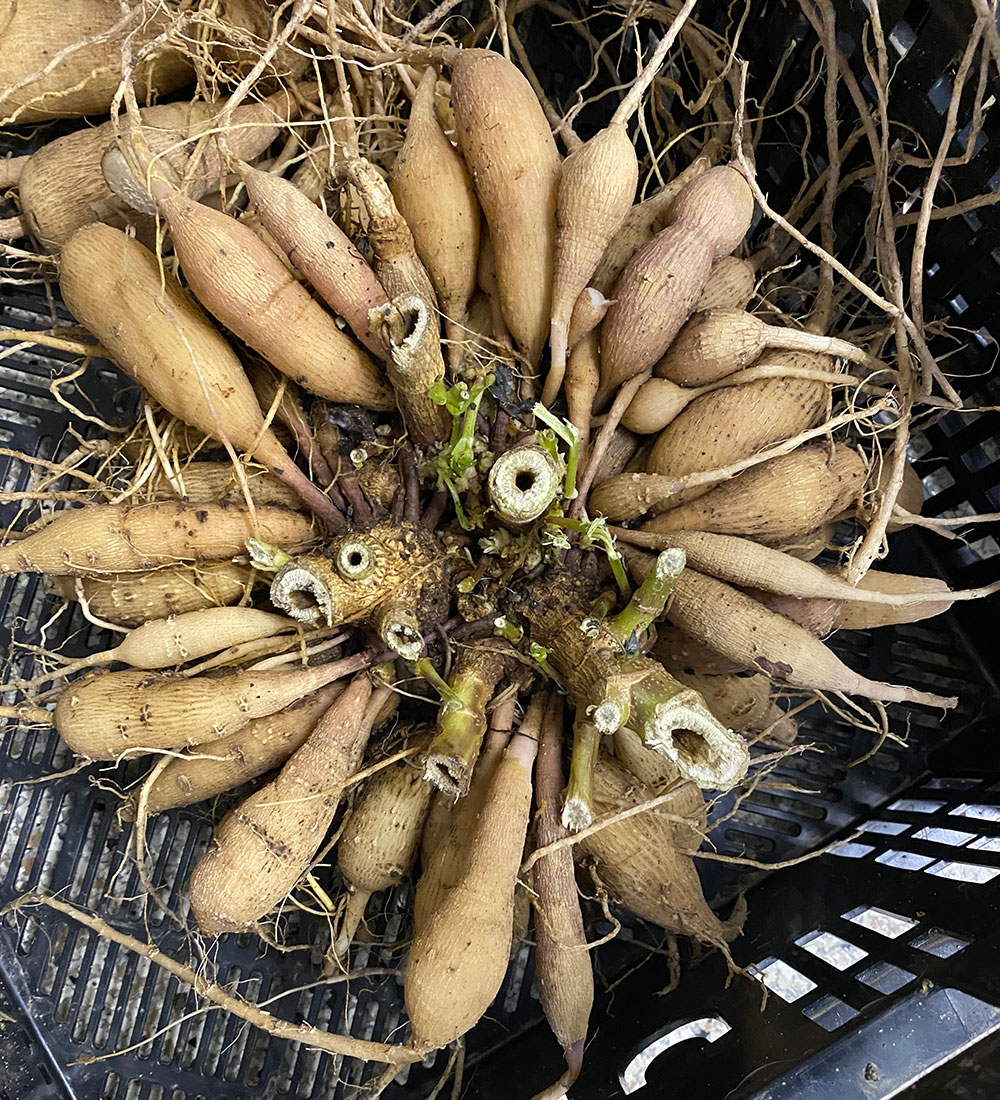
Bulbs, corms, tubers, and rhizomes
Summer-blooming plants with bulbs, corms, tubers, and rhizomes that are not winter hardy for the Northern Plains can be grown in containers, used in annual displays, or incorporated as accents in the landscape. Instead of sending these tender plants to the compost pile when the season is over, you can overwinter them. It’s easy to dig them up and clean them. Cannas (Canna spp. and cvs., Zones 8–11) and dahlias (Dahlia spp. and cvs., Zones 7–11) have a similar root structure and can increase significantly in size over a single growing season. Wait until after the first hard freeze to cut back the foliage of these plants. While it can be done earlier, you will sacrifice some of the potential growth available late in the season. After cutting back the foliage, leave the plants in the ground for five to seven days so the fleshy roots can cure. Afterward, using a sharp spade, carefully dig up the roots and shake off the soil. Cut the stem back to the crown and wash off the soil. With dahlias especially, it is very important to wash off the soil, which can harbor and breed bacteria if left in place. After washing, allow the plants to air dry for 24 hours. At this time, you can attach a label to the roots with the name of the cultivar and any other pertinent information. Store the clumps upside-down in a cardboard box or in a Styrofoam cooler, covering them with animal bedding, peat moss, or vermiculite. I prefer to use vermiculite, as it is lightweight and less likely to harbor bacteria that could lead to disease and other problems. Store the plants in a cool, dry location that stays around 40°F to 50°F through winter.
You can use this same process for other tender plants with bulbs, corms, tubers, or rhizomes such as Peruvian lilies (Alstroemeria spp. and cvs., Zones 5–11), caladiums (Caladium spp. and cvs., Zones 8–11), elephant’s ear (Colocasia spp. and cvs., Zones 8–11), and gladioli (Gladiolus spp. and cvs., Zones 5–11).
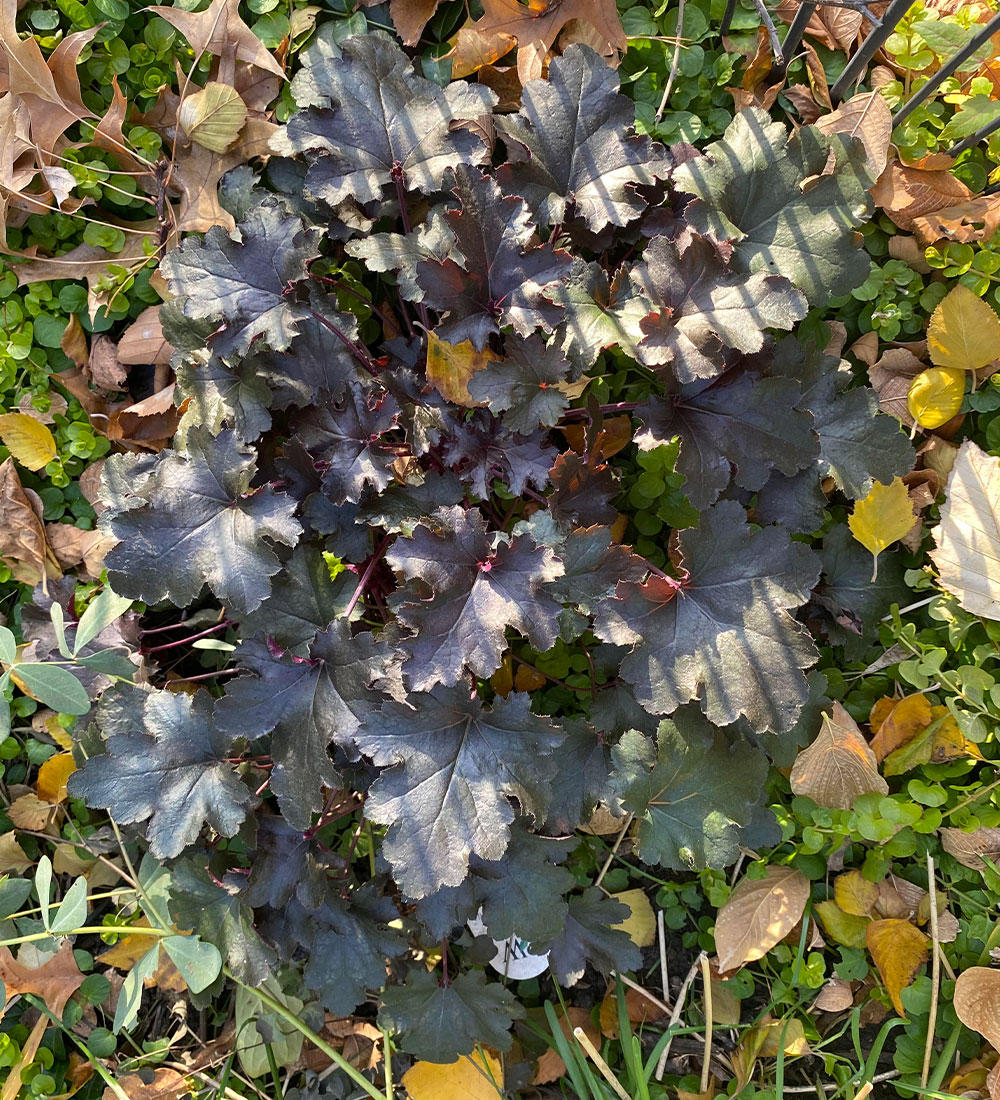
Herbaceous perennials
Some favorite perennials can have problems if our Northern winters are exceptionally cold and dry. Experience has shown me that those that can grow a trunk are often susceptible to winter damage without sufficient snow cover. Some species and cultivars of heuchera (Heuchera spp. and cvs., Zones 3–9), tiarella (Tiarella spp. and cvs., Zones 3–9) and pigsqueak (Bergenia spp. and cvs., Zones 3–9) may suffer in harsh winter weather. Before the ground freezes, make sure these are well watered with ample soil moisture to prevent soil cracking. Apply a fresh layer of shredded wood mulch or leaves around the base of these perennials to insulate the soil. Keep mulch off the crown of the plant so as not to smother. Additional protection can be provided with a light layer of leaves or straw placed on top of the plant once it is dormant. Remove it when new growth begins in the spring.
The cold winters and unpredictable snowfall of the Northern Plains do not have to limit the variety of plants available for us to use. Become knowledgeable of your site conditions and plan ahead; you too can successfully save a wide array of tender and nonhardy plants in your landscape.
Marti Neely, FAPLD, owns and operates Marti Neely Design and Associates in Omaha, Nebraska.
Fine Gardening Recommended Products

Fiskars 15" PowerGear Loppers—Sharp Steel Blade Bush and Tree Trimmer
Fine Gardening receives a commission for items purchased through links on this site, including Amazon Associates and other affiliate advertising programs.

Planting in a Post-Wild World: Designing Plant Communities for Resilient Landscapes
Fine Gardening receives a commission for items purchased through links on this site, including Amazon Associates and other affiliate advertising programs.

ARS Telescoping Long Reach Pruner
Fine Gardening receives a commission for items purchased through links on this site, including Amazon Associates and other affiliate advertising programs.




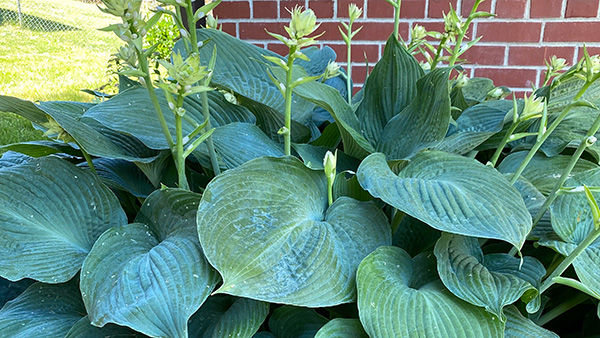














Comments
Log in or create an account to post a comment.
Sign up Log in